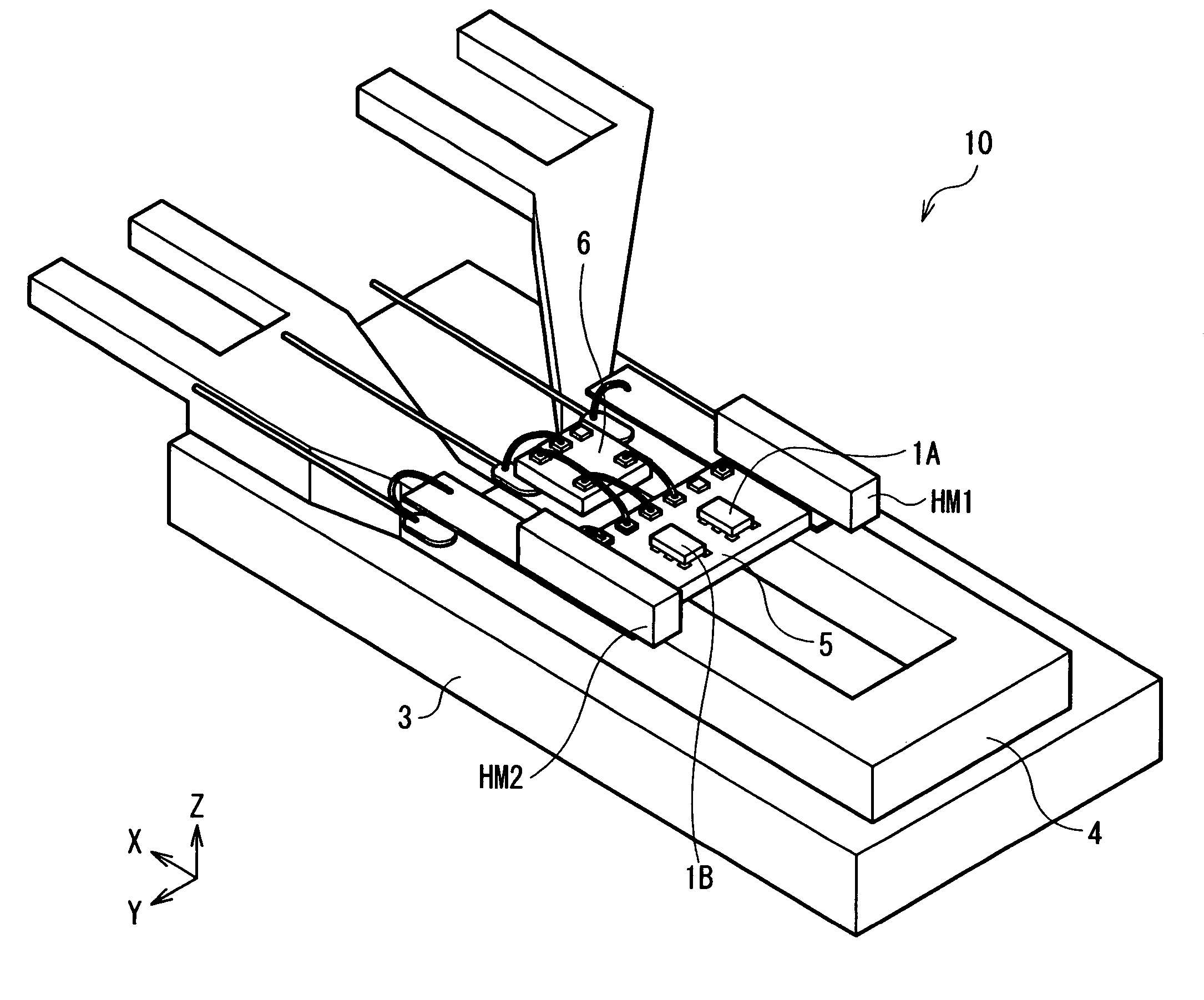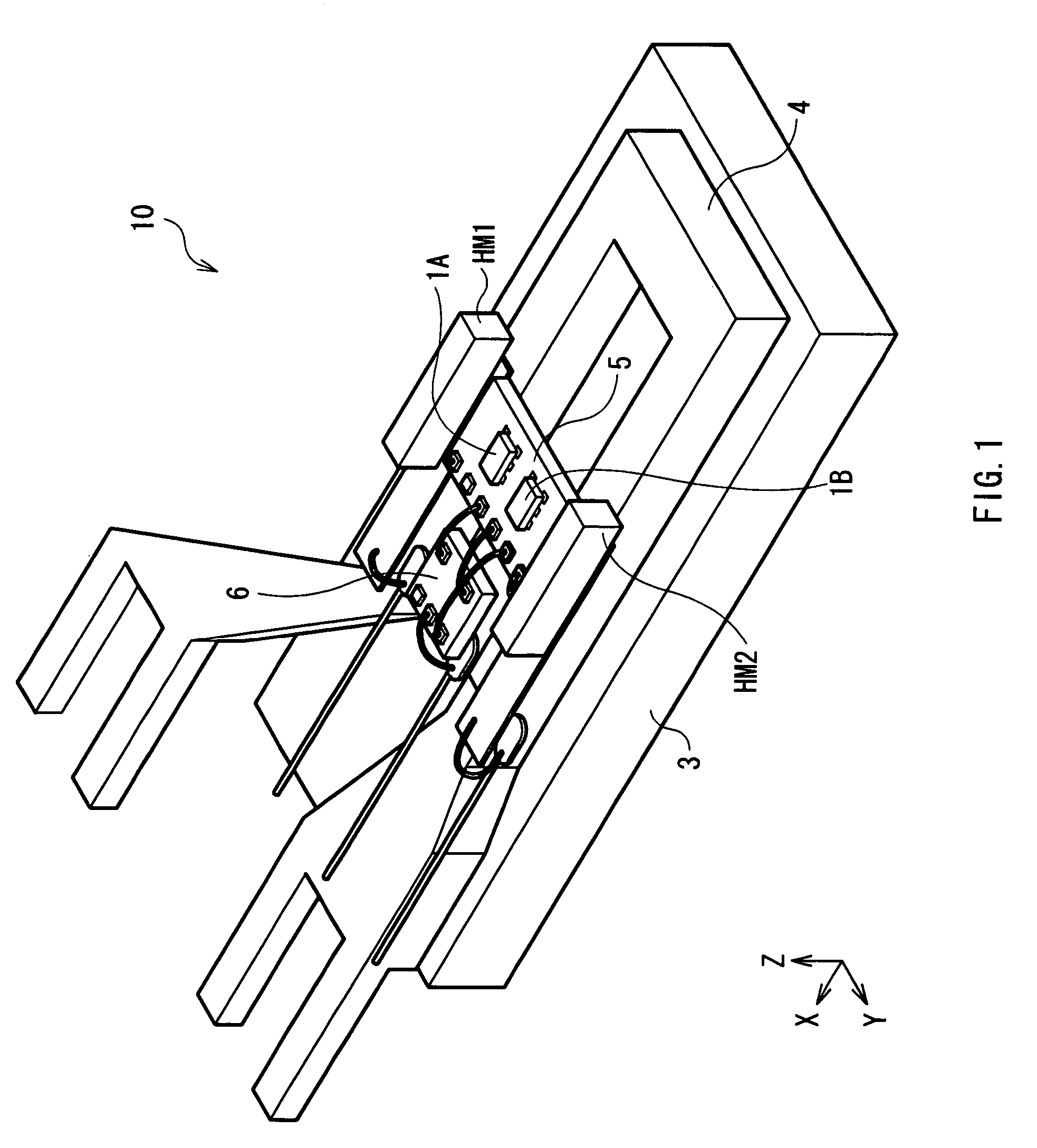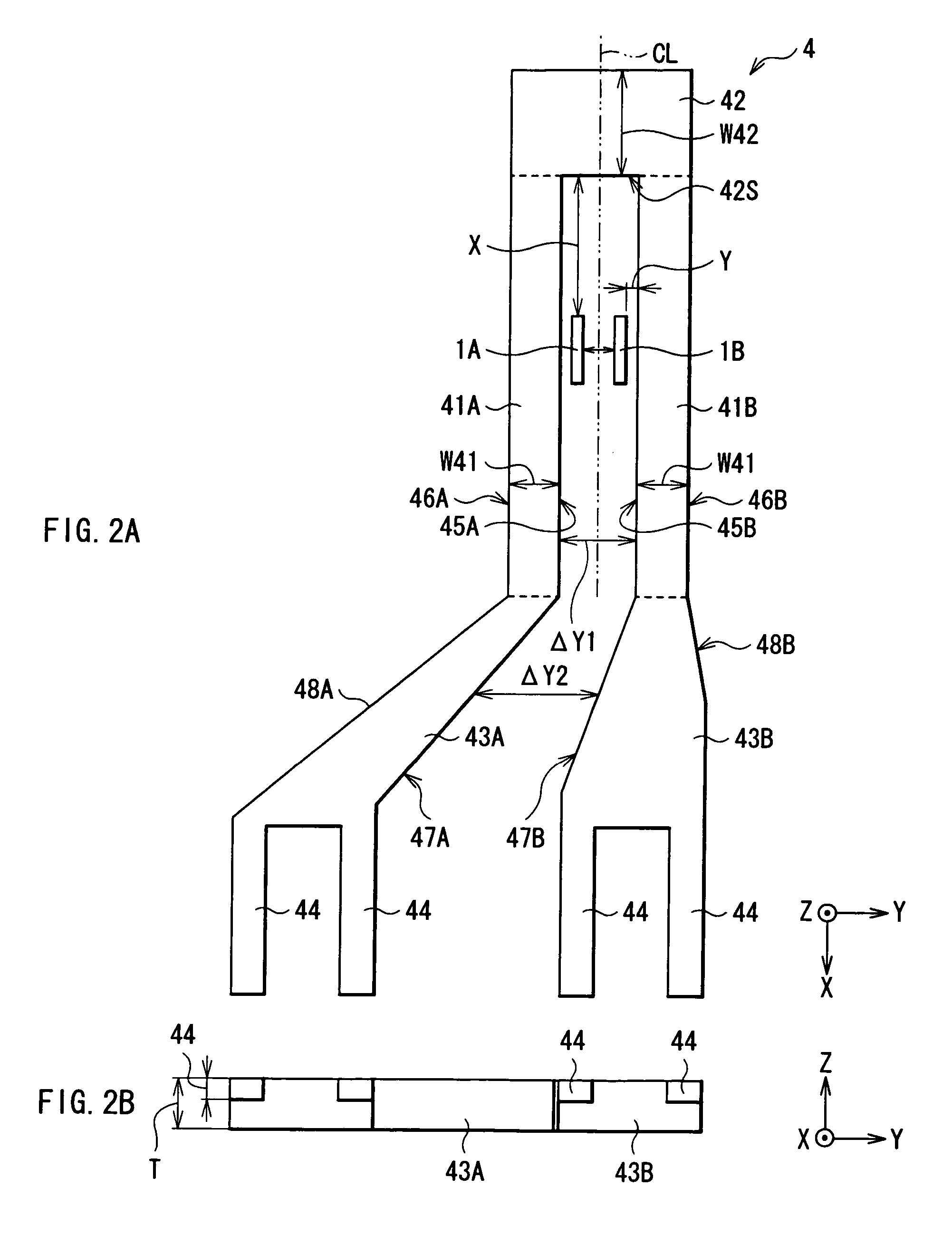Current sensor
a current sensor and sensor technology, applied in voltage/current isolation, voltage/current conversion, instruments, etc., can solve the problems of increasing the risk of electrical noise generation, so as to reduce the electric resistance, increase the heat dissipation characteristic, and reduce the effect of electric resistan
- Summary
- Abstract
- Description
- Claims
- Application Information
AI Technical Summary
Benefits of technology
Problems solved by technology
Method used
Image
Examples
example
[0070]Next, an example of the present invention will be explained hereinbelow.
[0071]FIG. 10 represents a magnetic field distribution in the X-axis direction generated when currents to be detected Im of 15 A, 25 A, and 50 A are supplied to the conductor line 4, respectively in the current sensor of the above-mentioned embodiment. In FIG. 10, the horizontal axis represents a distance X with an origin of the side face 42S of the connecting portion 42, and the vertical axis represents a magnetic field Hx along the X-axis direction. As shown in FIG. 10, in the case where a current to be detected Im was 50 A or below, if the distance X was 5 mm or more, the magnetic field Hx was 0.5×10−4 T or less. In particular, if the distance X was set to 4 mm or more in the case where the current to be detected Im was 25 A, or if the distance X was set to 3 mm or more in the case where the current to be detected Im was 15 A, then the magnetic field Hx could be restrained to 0.5×10−4 T or less. This is...
PUM
 Login to View More
Login to View More Abstract
Description
Claims
Application Information
 Login to View More
Login to View More - R&D
- Intellectual Property
- Life Sciences
- Materials
- Tech Scout
- Unparalleled Data Quality
- Higher Quality Content
- 60% Fewer Hallucinations
Browse by: Latest US Patents, China's latest patents, Technical Efficacy Thesaurus, Application Domain, Technology Topic, Popular Technical Reports.
© 2025 PatSnap. All rights reserved.Legal|Privacy policy|Modern Slavery Act Transparency Statement|Sitemap|About US| Contact US: help@patsnap.com



